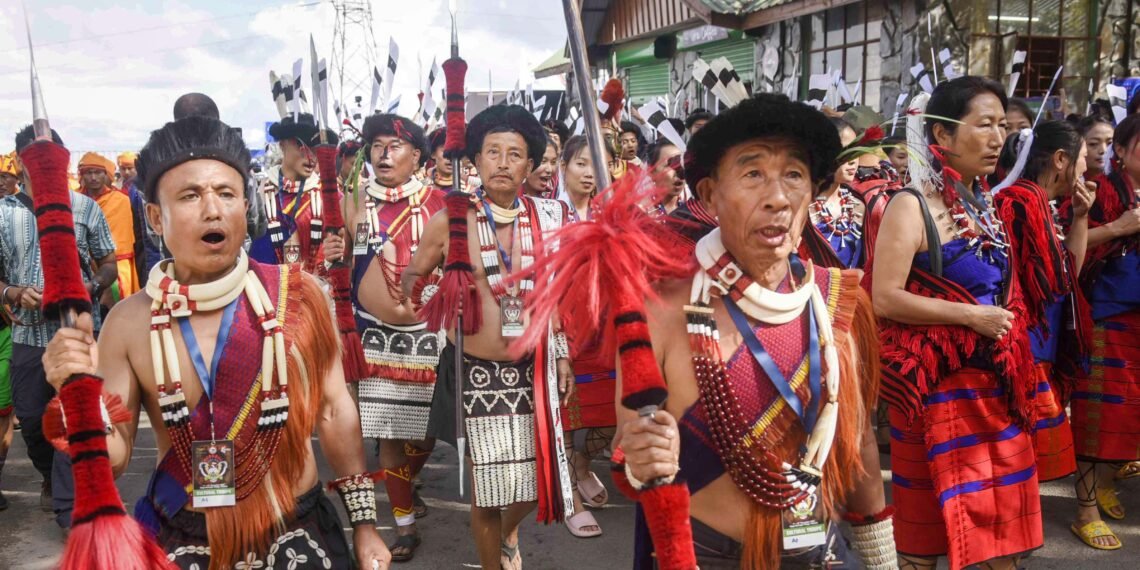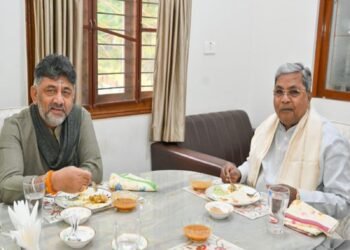The Hornbill Festival, Nagaland’s premier cultural event, kicks off on today (December 1), at 4.p.m. bringing together the state’s rich traditions, music, dance, and art. Held at the Naga Heritage Village in Kisama, near Kohima, this grand festival showcases the diverse ethnic groups of Nagaland, attracting visitors from around the world.
By PC Bureau
The highly anticipated Hornbill Festival of Nagaland begins each year on December 1, offering a vibrant celebration of Naga culture, art, music, and traditions. Known as the “Festival of Festivals,” this event serves as a grand display of the diverse ethnic groups within Nagaland, showcasing everything from traditional dances and music to tribal cuisine and handicrafts.
Held at the Naga Heritage Village in Kisama, just a short distance from the state capital, Kohima, the festival has become a cornerstone of the state’s cultural calendar, drawing both locals and tourists from across India and around the world. Last year, the festival attracted an impressive 1.54 lakh visitors, including a large number of international tourists. This year, organizers expect the attendance, both domestic and foreign, to nearly double.
One of the highlights of this year’s festival will be a performance by Mari Mathias, a renowned Welsh folk and indie singer-songwriter. Her presence adds an international touch to the event, blending global music with the rich cultural traditions of Nagaland.
In a notable development, Japan has been announced as the country partner for the Hornbill Festival this year. The partnership will feature Japan’s involvement in various sectors, including cultural performances, capacity-building initiatives, and workshops focused on handicrafts and bamboo products. Japanese resource persons, master craftspeople, and world-famous musicians will contribute to enhancing the festival’s cultural offerings, bringing a unique global perspective to this already diverse celebration.
Named after the majestic Hornbill bird, which holds great significance in Naga folklore, the festival continues to be a key platform for showcasing the traditions of Nagaland while promoting international cultural exchange.
Origins and Significance
Named after the Hornbill, a bird that holds great cultural and religious significance in many Naga tribes, the festival serves as a tribute to the vibrant traditions of the Naga people. The Hornbill is considered the “bird of heaven” by the indigenous tribes of Nagaland and is often associated with the folklore, mythology, and spiritual beliefs of the state’s various ethnic groups. The festival, thus, represents the harmony between the natural world and Naga traditions.
The festival was first introduced in 2000 by the Government of Nagaland to promote and preserve the state’s rich cultural heritage. What began as a regional celebration has now grown into one of the biggest cultural festivals in India, showcasing the Naga people’s deep-rooted traditions while also emphasizing unity, progress, and the shared identity of the state’s diverse tribes.
Highlights of the Hornbill Festival
The Hornbill Festival is a multi-day celebration that spans from December 1 to 10, and it is a veritable feast for the senses. Here are some of the key attractions:
Traditional Dance and Music
One of the most anticipated aspects of the festival is the traditional dance and music performances. Each of Nagaland’s 16 tribes showcases their unique dances, chants, and rituals. Dressed in their traditional attire, dancers often perform in sync to the rhythm of drums, gongs, and other tribal instruments, providing a visual and auditory delight for spectators. Some of the most captivating performances include the Aoleang Festival Dance of the Ao tribe and the Angami War Dance of the Angami tribe, each reflecting the history, culture, and values of the respective communities.
Tribal Sports and Games
The Hornbill Festival also features an exciting range of tribal sports and games, which not only entertain but also demonstrate the skills, agility, and strength required in the traditional practices of the Naga people. Among the favorites are the archery competitions, wrestling, and the thrilling log-trapping games that test the participants’ precision and endurance.
Handicrafts and Local Art
The festival grounds are lined with stalls that exhibit the finest handicrafts of Nagaland. From intricately woven shawls and Naga jewelry to wooden carvings and pottery, these crafts reflect the skill and creativity of the indigenous artisans. Visitors can also buy unique items like traditional headgear and handmade baskets, which serve as lasting memories of the festival and a way to support local craftsmanship.
Naga Cuisine
No festival is complete without its food, and the Hornbill Festival is no exception. A variety of traditional Naga dishes is served at food stalls, giving visitors the chance to savor the bold and spicy flavors of the state. Specialties such as smoked pork with bamboo shoots, fermented soybean chutney, rice beer, and roasted wild meat are just a few examples of the culinary delights available at the festival.
Cultural Exhibitions and Workshops
Throughout the duration of the festival, there are several cultural exhibitions and workshops designed to teach visitors about the rich history and customs of the Naga people. These include traditional weaving workshops, the art of bamboo crafting, and exhibitions on the folklore and mythology of Nagaland’s tribes. There are also informative sessions about the Naga peace process, where discussions on the region’s political landscape and hopes for the future are held.
Music Concerts and Entertainment
Apart from traditional performances, the festival also features modern music concerts, where local bands and artists showcase their talents. These performances create an interesting fusion of traditional and contemporary music, making the event more appealing to younger audiences.
Promoting Unity and Peace
While the festival is a celebration of Naga culture, it also serves a greater purpose in fostering unity and peace among the different tribes of Nagaland. The Hornbill Festival, with its vibrant displays of cultural diversity, promotes a message of peaceful coexistence and mutual respect. In a state historically marked by ethnic and political tensions, the Hornbill Festival stands as a testament to the power of cultural celebration in bridging divides and building a shared identity among the people of Nagaland.
Additionally, the festival plays a crucial role in promoting tourism in Nagaland, drawing visitors from across India and abroad. This influx of tourists provides a significant economic boost, particularly to the local economy, benefiting artisans, hoteliers, food vendors, and transportation services. The festival also helps spread awareness about the rich cultural heritage of Nagaland, making it an important event for the state’s cultural diplomacy.
A Call to Experience Nagaland
For those who haven’t yet experienced the Hornbill Festival, it is an absolute must-visit event that promises to offer something for everyone—whether you’re a history enthusiast, a culture lover, a foodie, or simply someone seeking to experience the magic of Nagaland. The festival not only highlights the diversity and beauty of the Naga tribes but also provides a platform for the world to learn about one of India’s most unique and culturally rich states.
With the festival opening this evening, Nagaland will once again come alive with a colorful celebration of its traditions, and it’s an event that promises to captivate, educate, and entertain in equal measure. So, pack your bags, book your tickets, and get ready to immerse yourself in the vibrant heart of Nagaland at the Hornbill Festival.













